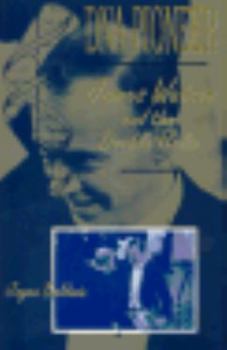DNA Pioneer: James Watson and the Double Helix
-- New York Public Library Book for the Teen Age, 1995A thorough presentation of Watson's background and work, with some glimpses into his personality and private life. -- SLJ. This description may be from another edition of this product.
Format:Hardcover
Language:English
ISBN:0802782973
ISBN13:9780802782977
Release Date:January 1994
Publisher:Walker & Co
Length:136 Pages
Weight:0.70 lbs.
Dimensions:8.5" x 1.5" x 5.8"
Age Range:12 to 16 years
Grade Range:Grades 7 to 11
Customer Reviews
1 rating
Celebrating 50 Years - 1953 to 2003
Published by Thriftbooks.com User , 22 years ago
Name: James Dewey WatsonBorn: April 6,1928Parents: James Dewey & Margaret Jean WatsonSister: Elizabeth (2 years younger) WatsonChildhood: ChicagoEnjoyed: Piano, Theatre, Birding, and ReadingJames Watson was 15 years old when he entered University Of Chicago as a freshman in a program for Gifted Students. His high school teachers helped him gain a scholarship to University of Chicago and suggested skipping junior and senior years of high school. He got A's in Biology and Social Sciences, B in Math, and C in English. One day he pulled a book off the shelf that would have a lasting impression on his life. The book is called, What Is Life? The Physical Aspects Of The Living Cell, written by Erwin Schrodinger. Watson was fascinated by the idea of finding the secret of life. He thought, to unlock the secret of life would be the best accomplishment in life.He got accepted to Indiana University to pursue his dream. He worked with Professor Luria to determine how X- rays affected the reproductive ability of bacteriophage. In the summer, the phage group met at Cold Spring Harbor Laboratory in Long Island, New York. Then James moved to Europe to Cambridge University in England in order to further his work. It is there that he met Francis Crick. James Watson felt he was in a race to find the secret of life. The two scientists twisted and turned the double helix model that they built, trying to learn the structure that fit the data. Their discovery led to the fact that in order for the cells to copy themselves, chromosomes must replicate. Replication begins when the double helix unzips. The article announcing the discovery of DNA appeared in the April 25, 1953, issue of Nature, a British science journal. This discovery came when James celebrated his 25th birthday.The discovery of the structure of DNA triggered a scientific revolution. It helped to create the science of molecular biology. The Watson-Crick double helix is probably the most famous of all molecular structures. What does one do for an encore after such a historic finding? James then went to work as a senior research fellow at the California Institute of Technology, returned to Cambridge University, and then joined Harvard University. It was when Watson was working at Harvard, on October 18, 1962, a reporter at a Swedish radio station called to announce that James had won a Nobel Prize. He shared the prize and $50,000 with Drs. Crick and Wilkins. James Watson decided to split his time at Harvard and Cold Spring Harbor Laboratory. His idiosyncrasies blocked him from gaining a top post at Harvard. James married Elizabeth Lewis in 1968. She was a Radcliffe student. Their son, Rufus, was born in 1970 and Duncan was born in 1972. Through federal grants, private donations and an $8 million gift from the A & P grocery store chain, James said farewell to Harvard. He decided to dedicate himself to his favorite place, Cold Spring Harbor Laboratory.In January 1977, James received a call from the White Hous





